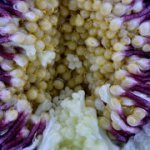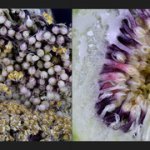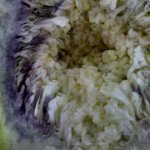Rob
Member
As we all know, there are male flowers in Caprifigs, but reading pretty much any online material, it is almost always mentioned that they are situated in about the bottom 1/3 of the syconia, and while that is true, it is certainly not the only place that they can be, as a few pictures here clearly show. I have to wonder why they make blanket statements like that, and of course the first time anyone notices any difference, they assume there is something wrong with their tree for producing incorrect looking Caprifigs. Of course I am assuming that these differences are not just seen here, but worldwide. These are all from different trees and taken by me, and I do have more.
Click for original

Click for original

Click for original

Click for original

.
Click for original

Click for original

Click for original

Click for original

.
